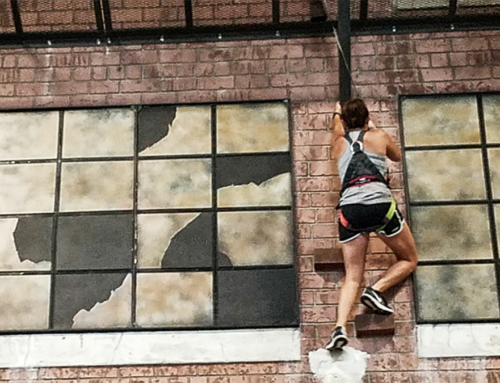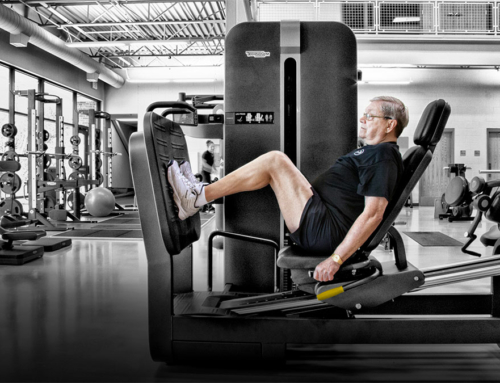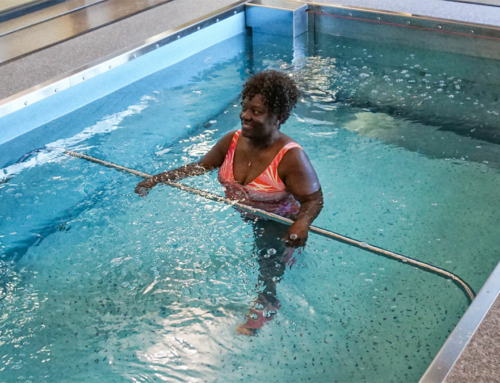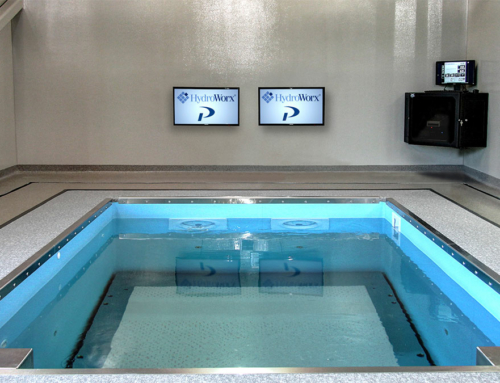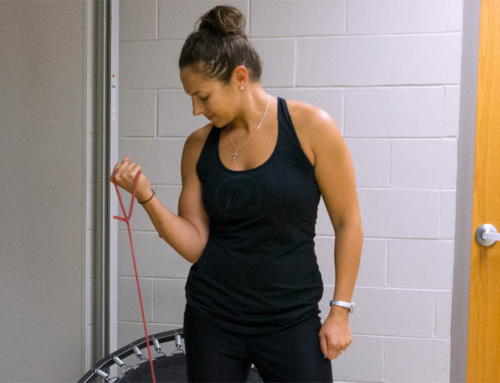Last week we covered the type of surgery Sunni had and observed the interesting effects of post-surgical pharmacological pain management (such as lots of smiling).
After 5 days it was time for Sunni’s physical therapy sessions to begin. And, just in case some of our readers may not be aware of what physical therapy is and the benefits it provides, here’s a quick explanation.
Physical therapy is an effective form of treatment for a wide variety of conditions. From orthopedic conditions such as arthritis, back and neck pain, joint conditions, and more, to neurological related conditions.
Physical therapy is also effective in post-surgical situations such as joint replacement and, in Sunni’s Case, a larbral repair with biceps tenodesis.
Physical therapy uses physical intervention to help with pain relief and improve mobility and at Pinamonti Wellness Center’s physical therapy clinic we employ hands-on techniques to facilitate functional recovery.
Sunni began her physical therapy with what’s know as Phase 1 passive range of motion. Its purpose is to reestablish range of motion in a pain free environment. This is a maximal protective phase. It is essential that the repair is not strained. To accomplish this the patient can not exert any effort in the movement of the joint as that would hinder her recovery. All of the range of motion is performed passively.
(Below are some images during Sunni’s first couple of weeks of passive range of motion.)
Pendulum exercise
Passive range of motion with her physical therapist Chris Wilson
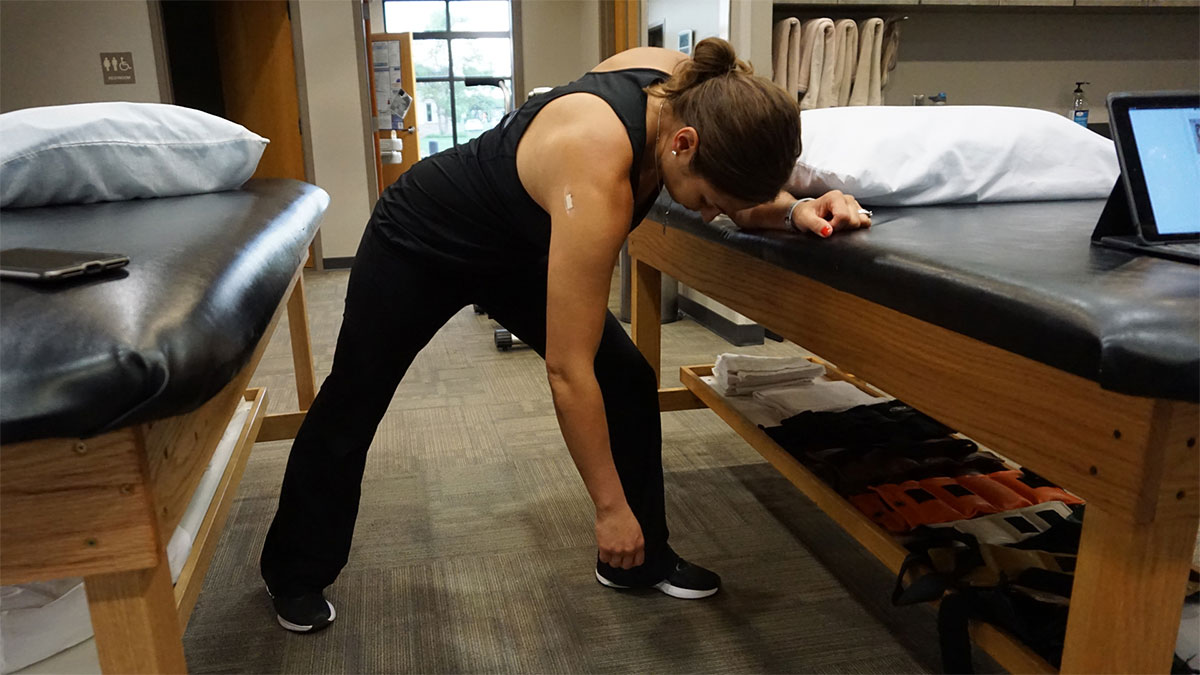
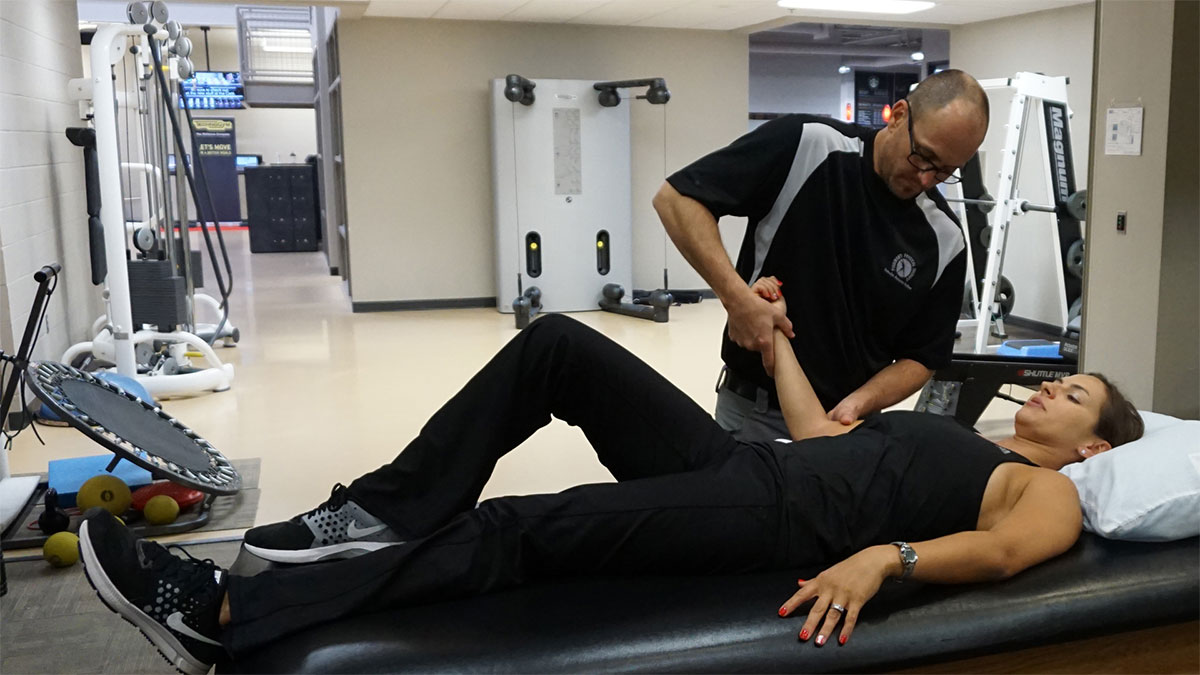
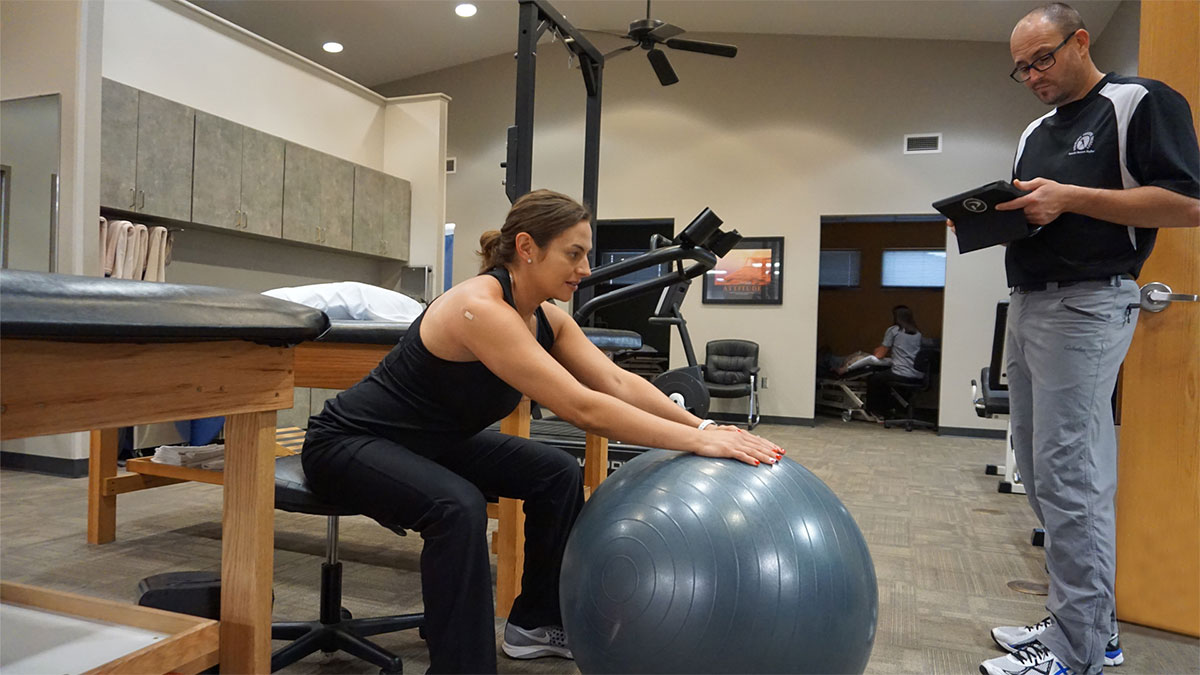
Swiss ball shoulder flexion
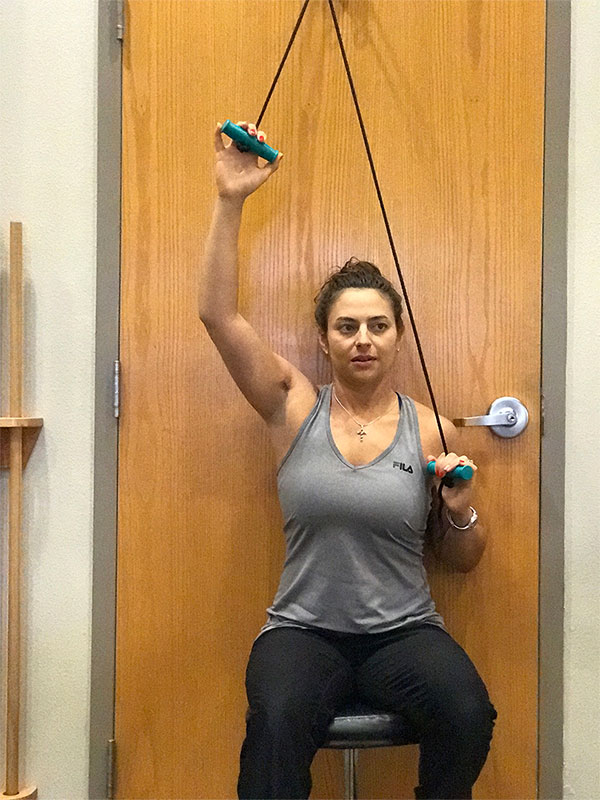
Passive range of motion using pulley
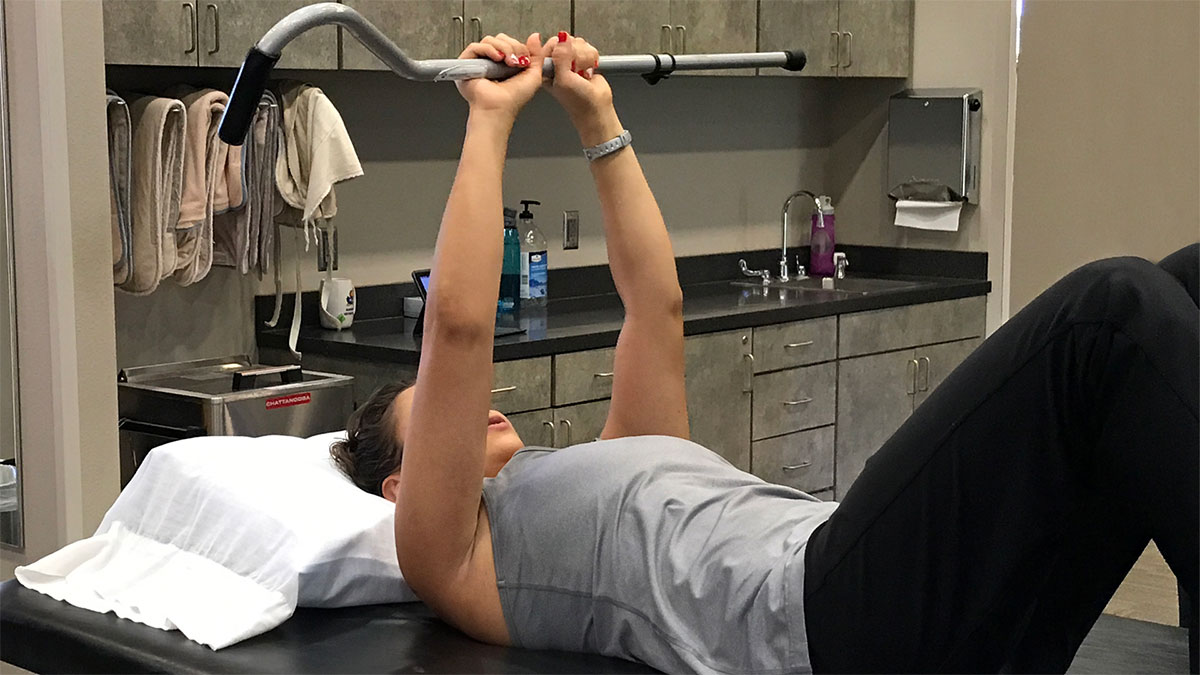
Shoulder flexion using a cane


